This small project was a joint effort between Tassilo Neubauer (Morpheus) and Andre Assis. We originally started working on this over a year ago. We ran a ton of experiments, and we want to document what we've done and found. We hope that other people can pick up from where we left.
Introduction
In this work, we investigated how Toy Models of Superposition behave as we move away from the high sparsity regime. This project is listed on the Timaeus website as a starter project.
To start, we reproduced the results from Dynamical versus Bayesian Phase Transitions in a Toy Model of Superposition. Then we explored what happens to the loss and the local learning coefficient (LLC) estimates over training over a wide range of sparsities under two different initialization conditions: optimal and random 4-gon initialization.
Our work is hardly complete, and we will not be pursuing this project further. This is our attempt to document our work and share it with others. There are many unanswered questions, and the reader should keep in mind that we were sometimes just doing stuff.
Experimental Setup
In all our experiments, we used 6 input dimensions and 2 hidden dimensions, which are then reconstructed back to 6 dimensions.
In order to have a smooth transition from the fully sparse regime (S=1) to the dense regime (S<<1), we defined our input vectors for the model like so:
- Each vector has at least one entry equal to 1. All other entries are:
- 0 with probability S or
- 1 with probability S-1.[1]
- The sparsities S-values we tested were [0.993, 0.988, 0.980, 0.964, 0.938, 0.892, 0.811, 0.671, 0.426].
For each sparsity value, we ran 200 different seeds (from 0 to 199) under two different initialization conditions:
- Using the optimal solution in the high-sparsity regime as the starting point
- A 4-gon is initialized with some random noise added to the coordinates.
This gives us a total of 4000 experiments (2000 with random 4-gon initialization and 2000 initialized at optimal parameters for high sparsity).
The optimal solution for high sparsity is defined as:
- A set of 6 vectors forming a hexagon, where each vector has a magnitude from the center, and the biases of all of them are [2]
All the auto-encoders were trained for 20,000 epochs, and we saved 50 logarithmically spaced snapshots along the training.
The complete configuration used in our experiments is available in the Appendix.
The LLC estimates were computed using the implementation from the Epsilon-Beta Visualizations notebook from Timaeus. We ran a grid search for batch_size and learning_rate and chose default values of 300 and 0.001, respectively, for the LLC estimates.
Results
Here we collect a series of observations from our results. For brevity, these are collected mostly as bullet points.
TMS Sparsity: Interactive Loss vs. LLC Visualization
We're also releasing a 100% vibe-coded companion Streamlit app if you would like to explore our results more interactively:
https://tms-sparsity.streamlit.app/
LLC vs. Loss Progression During Training
First, we analyzed how the loss and LLC values changed as training progressed for the different sparsity levels.
- Points on loss and LLC values:
- Generally, we observed that lower loss solutions tended to have higher LLC estimates.
- The models tend to cluster at certain loss levels.
- Points on the solutions found:
- Generally, the models initialized at the hexagon solution of the sparse regime find solutions that are close to optimal in the dense regime. The models with the lowest loss that were randomly initialized are in a similar range.
- The optimal solutions in the range 0.964-1 are all boring Hexagons. The Hexagon solutions are not often found when randomly initialized (although Tassilo checked with a few runs, and if we had chosen a step size of 0.05, Hexagons would be found more often).
- The randomly initialized models often have 1 or more "dead" neurons. Those dead neurons seem to be the main reason why the solutions found by the random initialization have higher loss on average.
- The lowest loss solution for 0.938 is a Pentagon with an Axial Symmetry
- At 0.892 sparsity, there is both a Pentagon and a 4-gon solution. Variation in the loss between instances of those solutions is larger than the difference between the Pentagon and the 4-gon solution.
- The low-loss solutions for 0.811 are various 4-gons.
- For sparsity 0.671, the low-loss solutions are both 3-gon and 4-gon solutions with 0 to 2 negative biases.
- The lowest loss solutions for 0.426 are 5-gons with all positive biases.
NOTE: The absolute values of the LLC estimates are highly dependent on the hyperparameters used. The absolute numbers of LLC estimates are not meaningful, and the reader should not pay attention to absolute values, but rather to relative changes in LLC values within one sparsity.






To illustrate one of the solutions in more detail, here are the solutions we find for the lowest loss level in the dense regime.
What happens here is that two solutions tend to do relatively well, with an average MSE a little above ~0.15. One is a Hexagon solution that is similar to the optimal solution in the sparse regime, just the biases are positive. The other solution is a triangle solution, where the model "wastes" an entire dimension of its internal embedding to encode 1 output dimension and uses the remaining 1 dimension to encode the remaining 5 dimensions. From looking at how those models were initialized, it seems like the models get stuck in this solution if one of the biases is initialized to be relatively large. (Orange is the test-loss and blue is the training-loss)
TODO ANDRE: Write description for the % k-gon plots
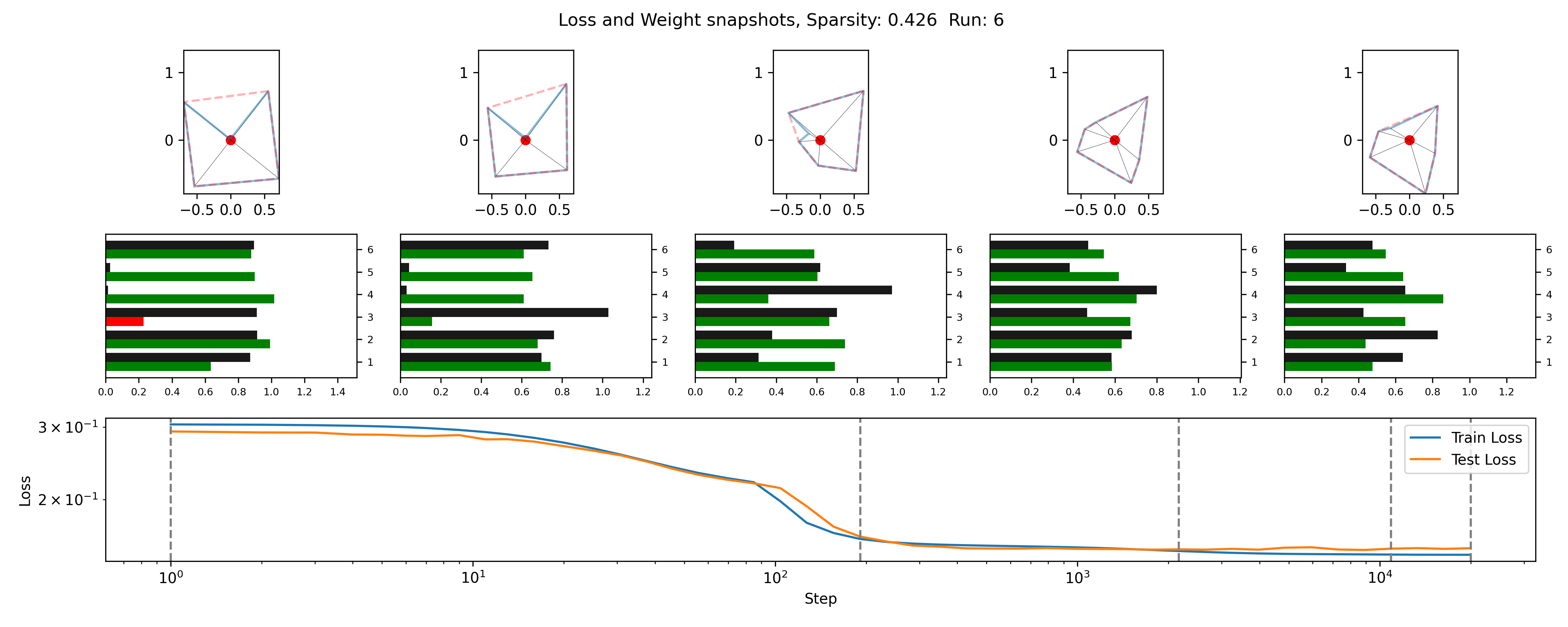
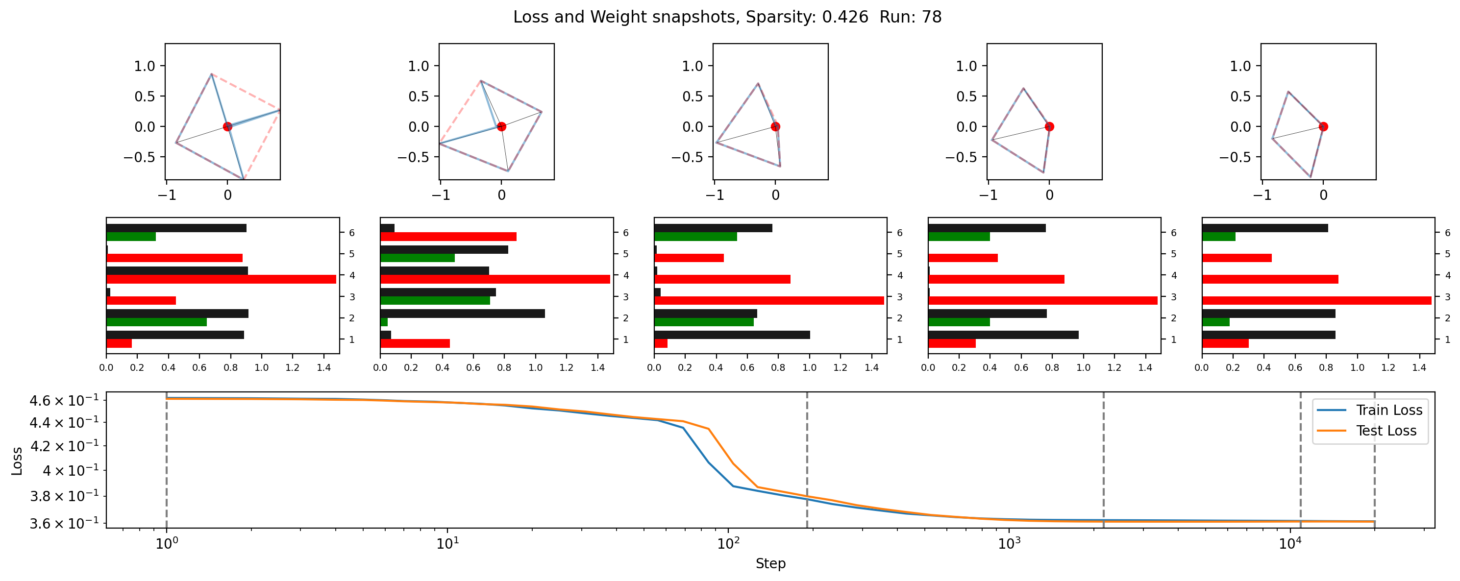
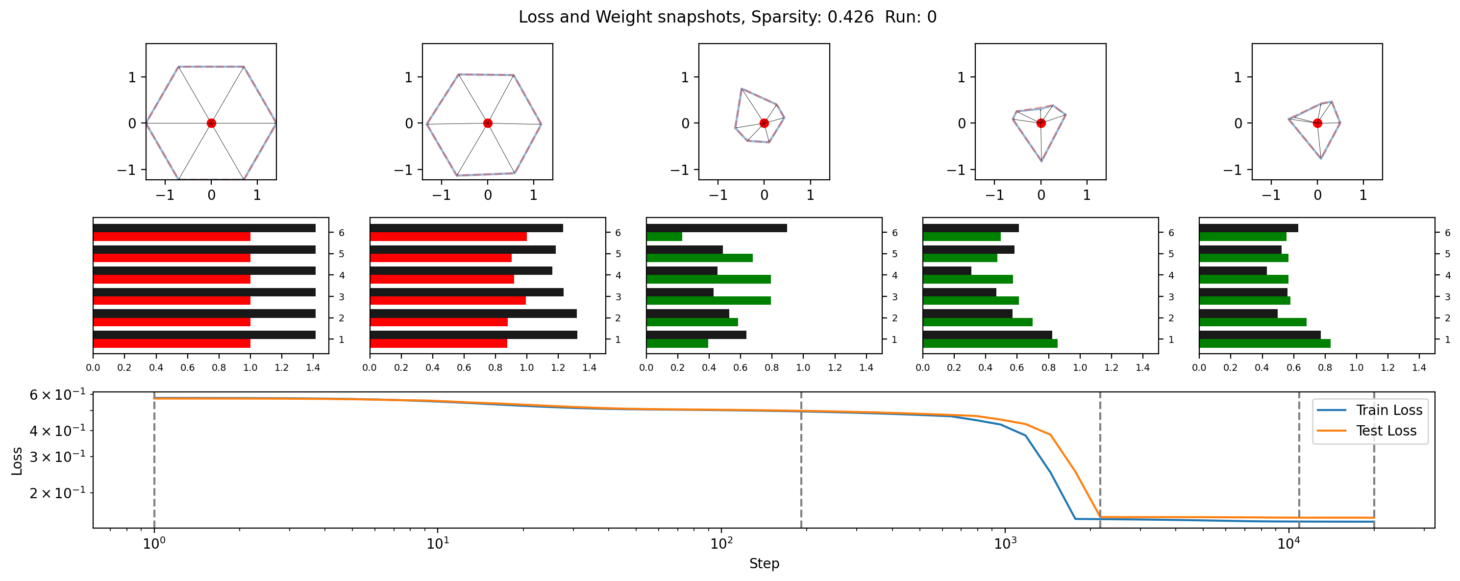
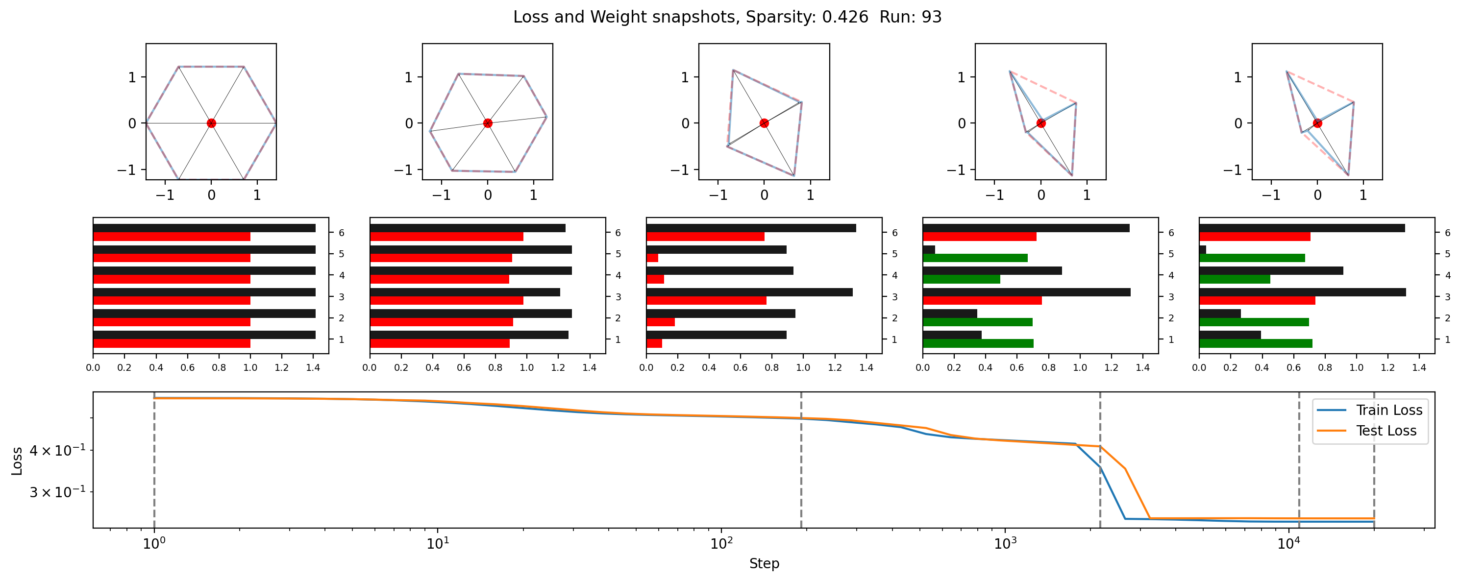

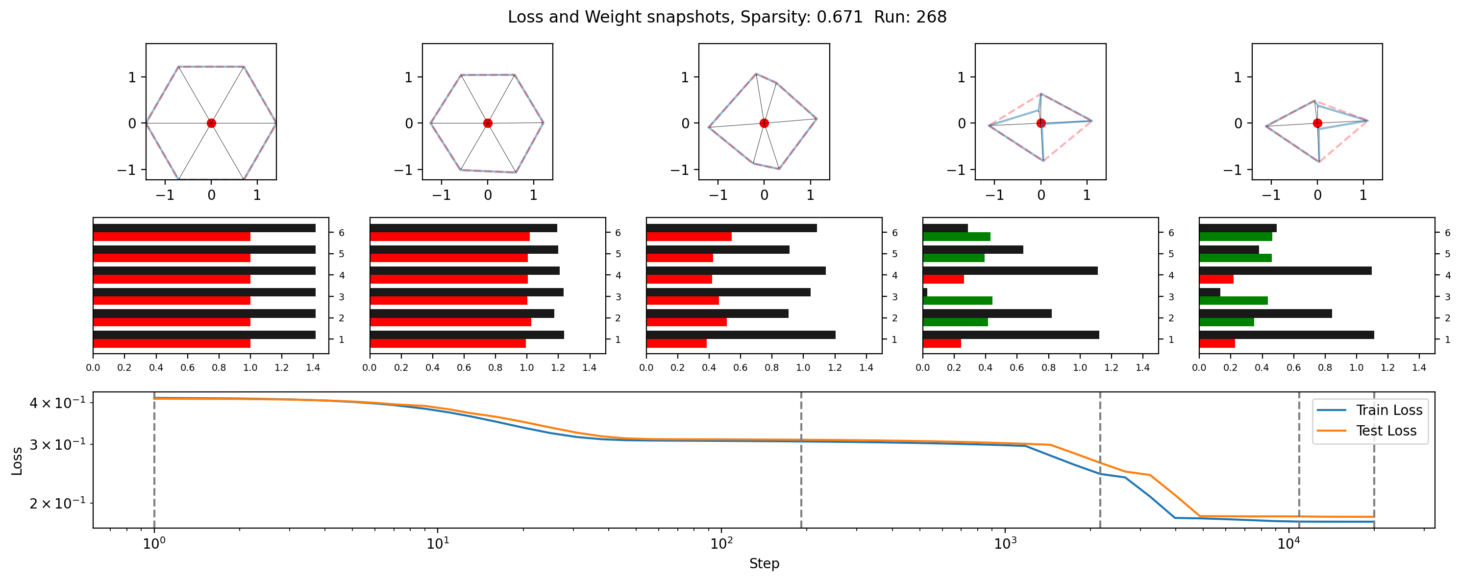

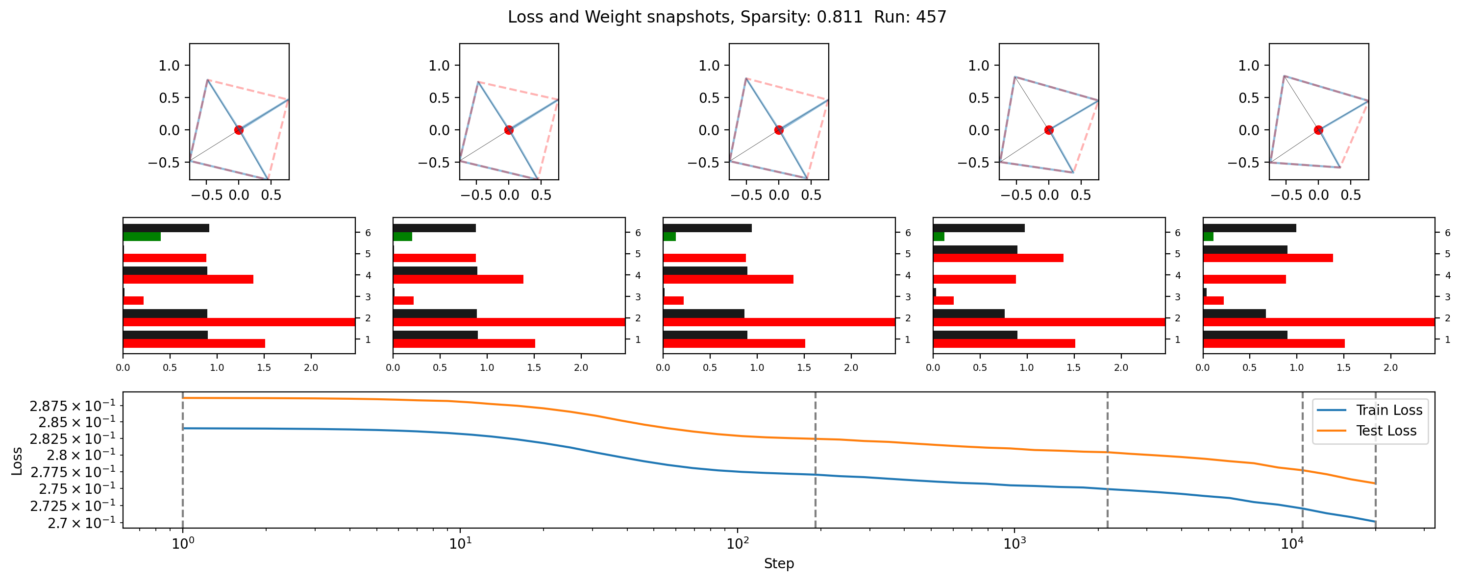

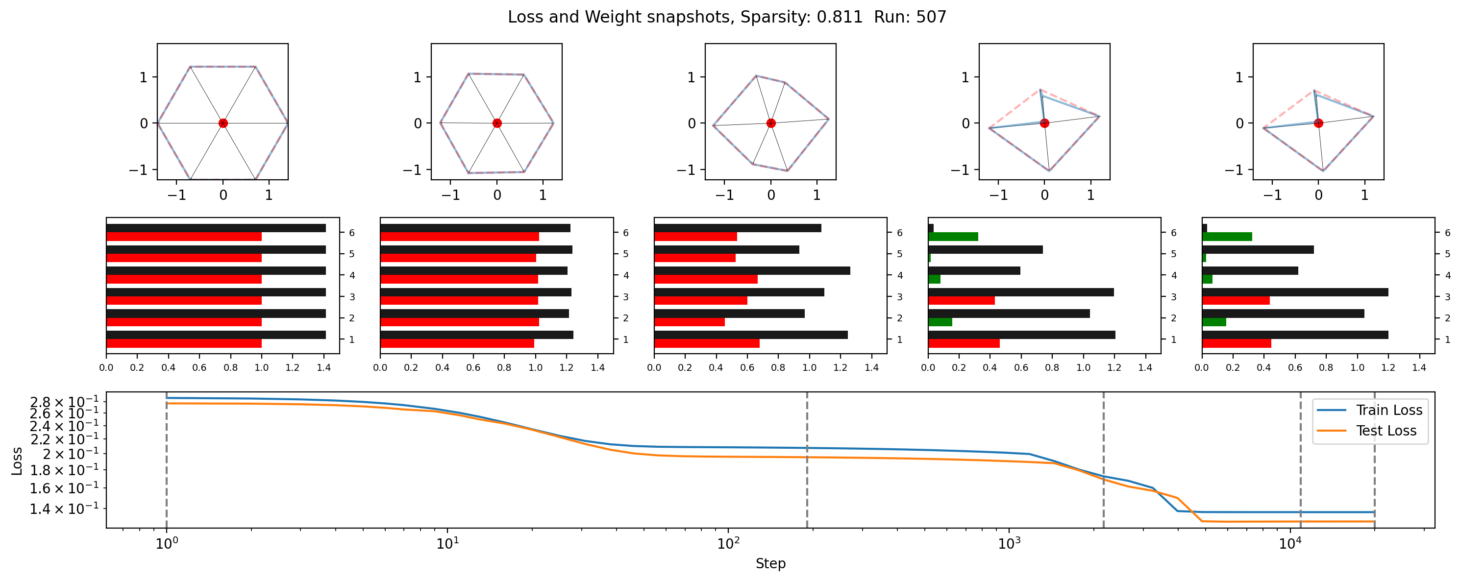
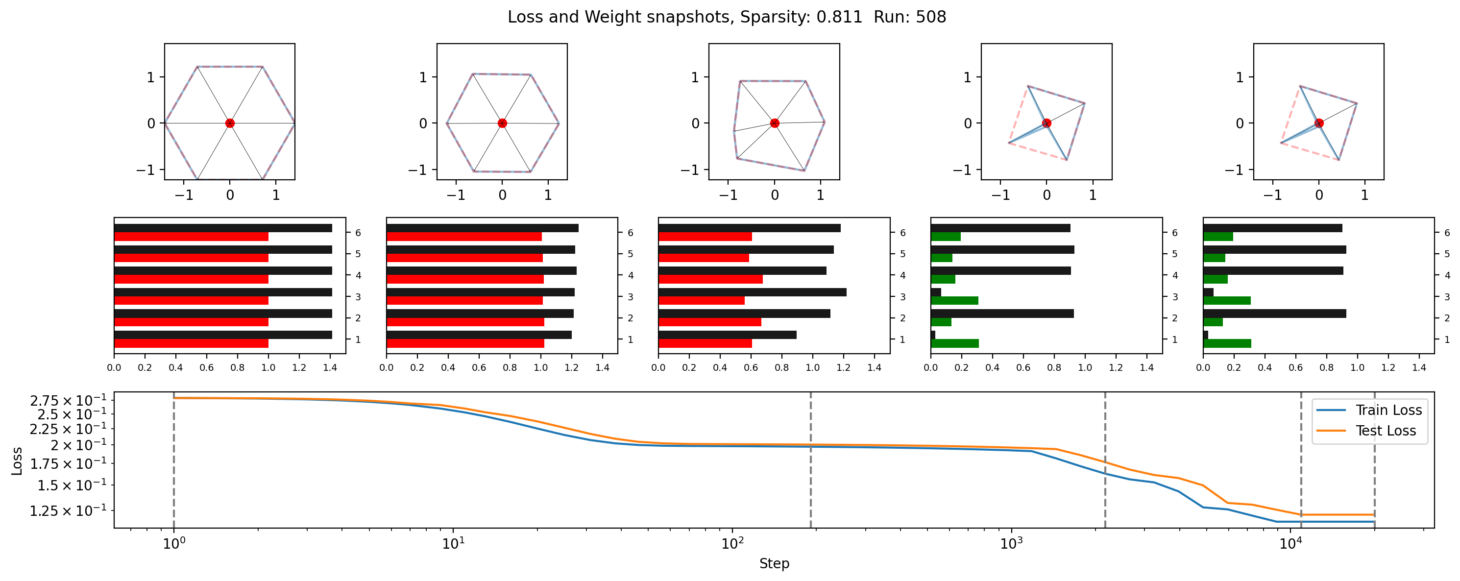
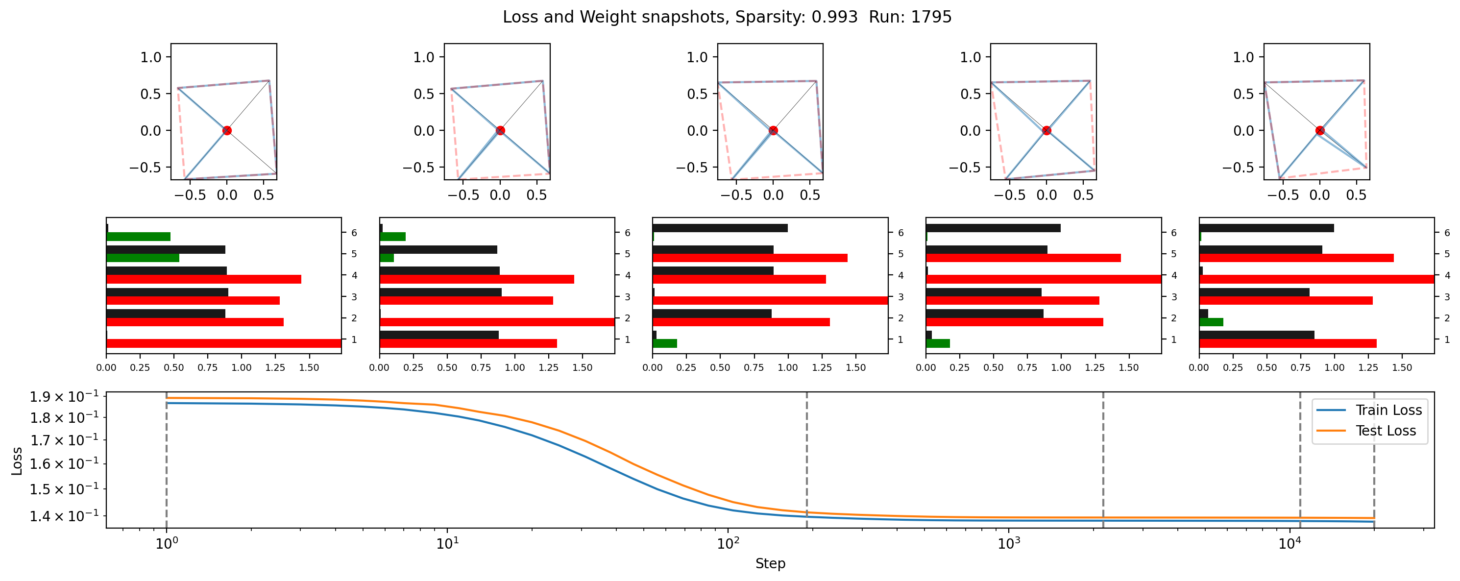
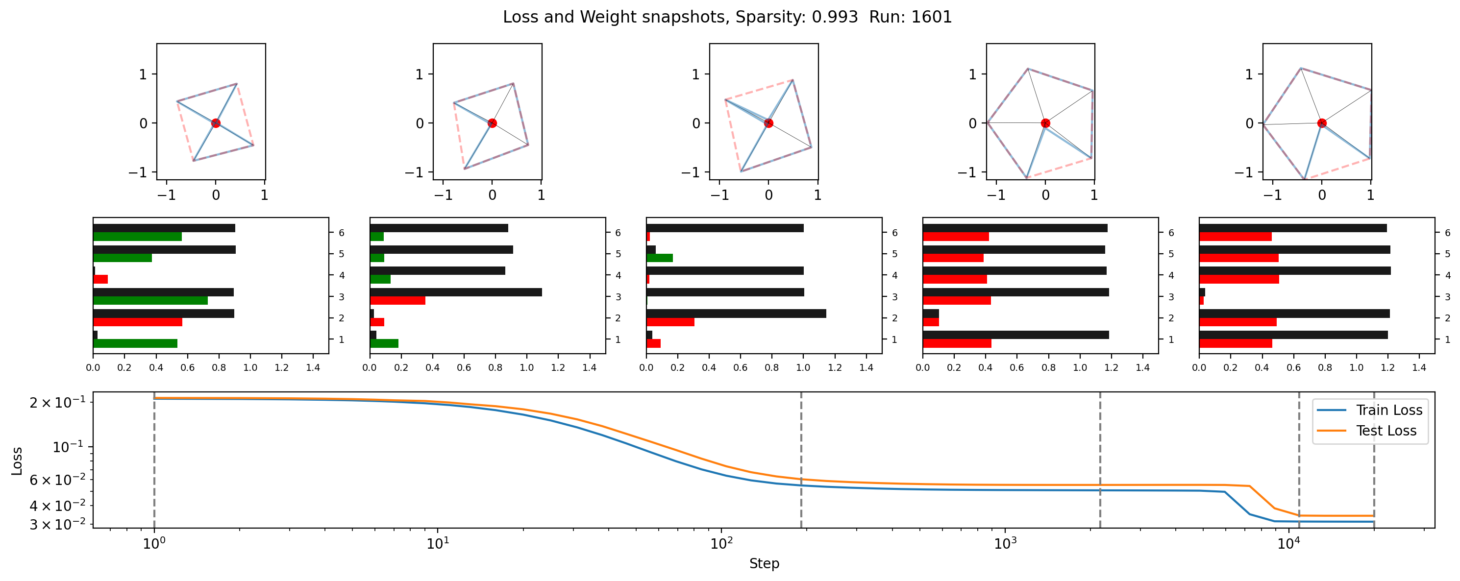

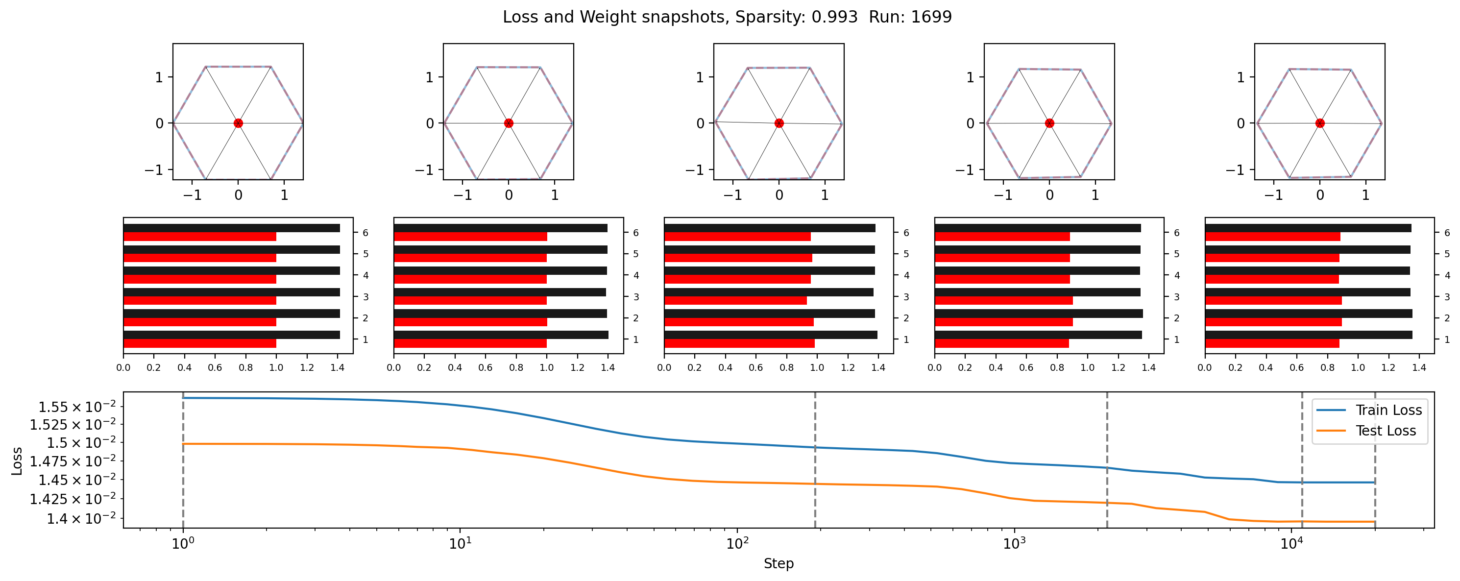
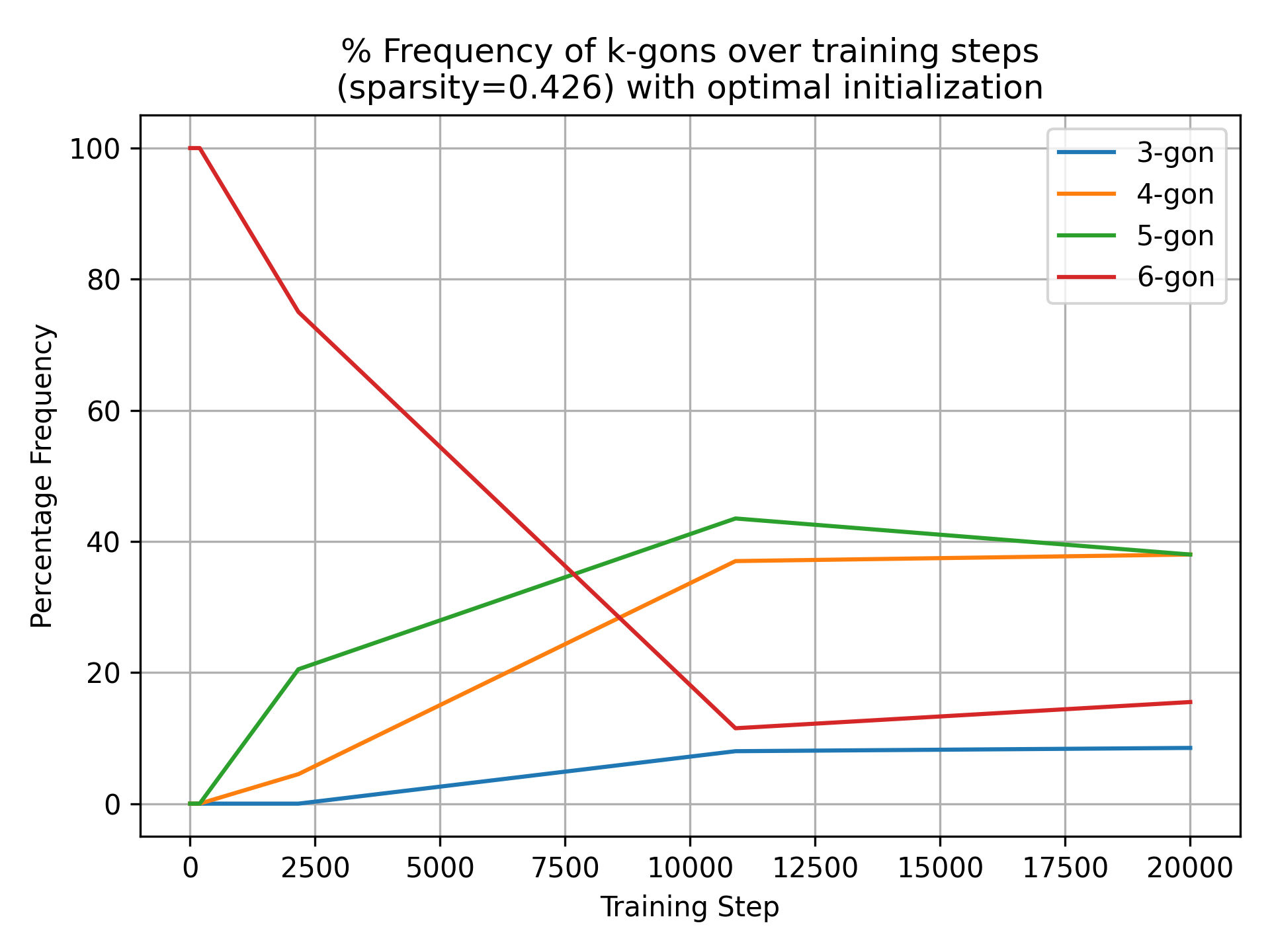
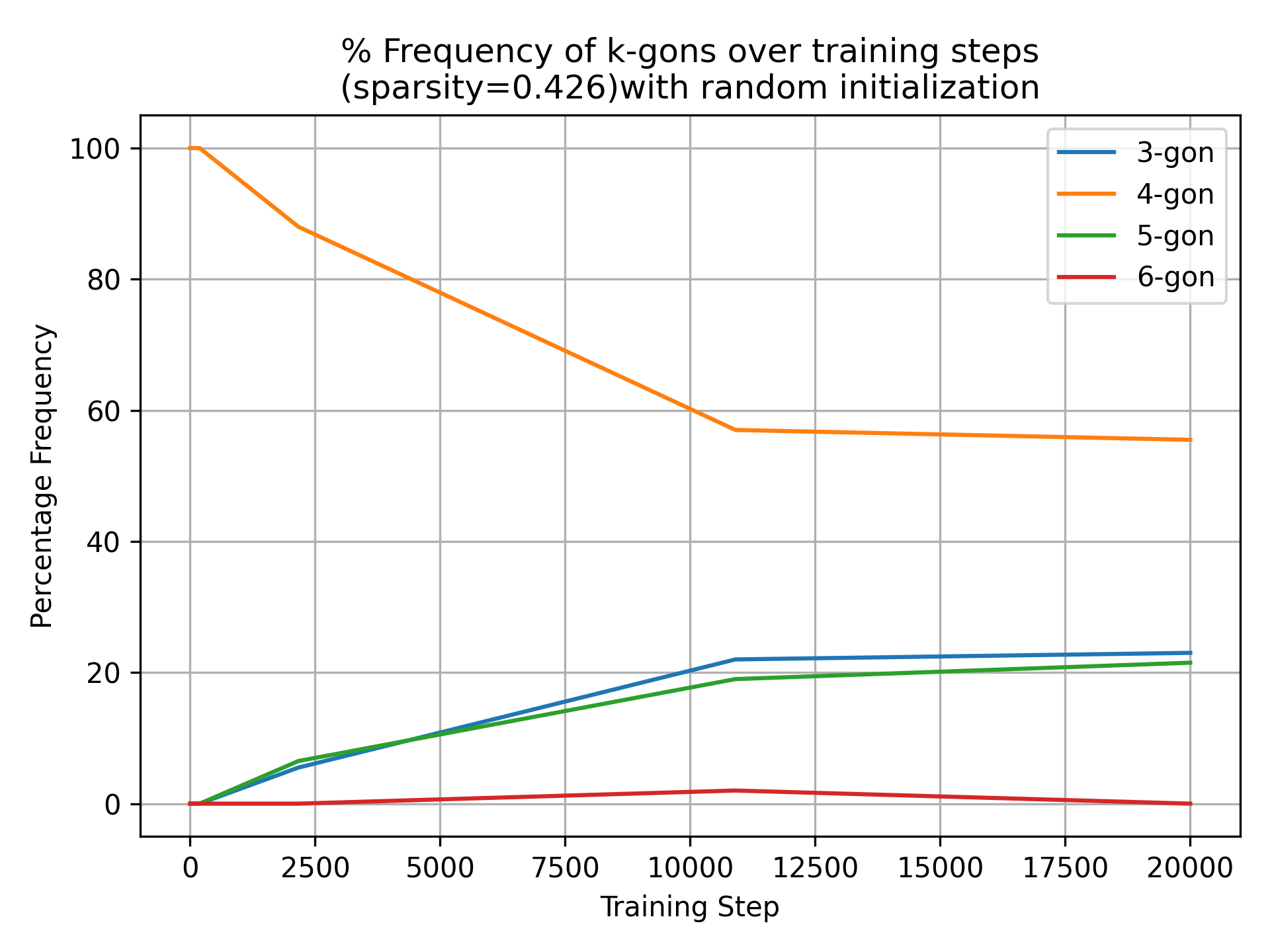

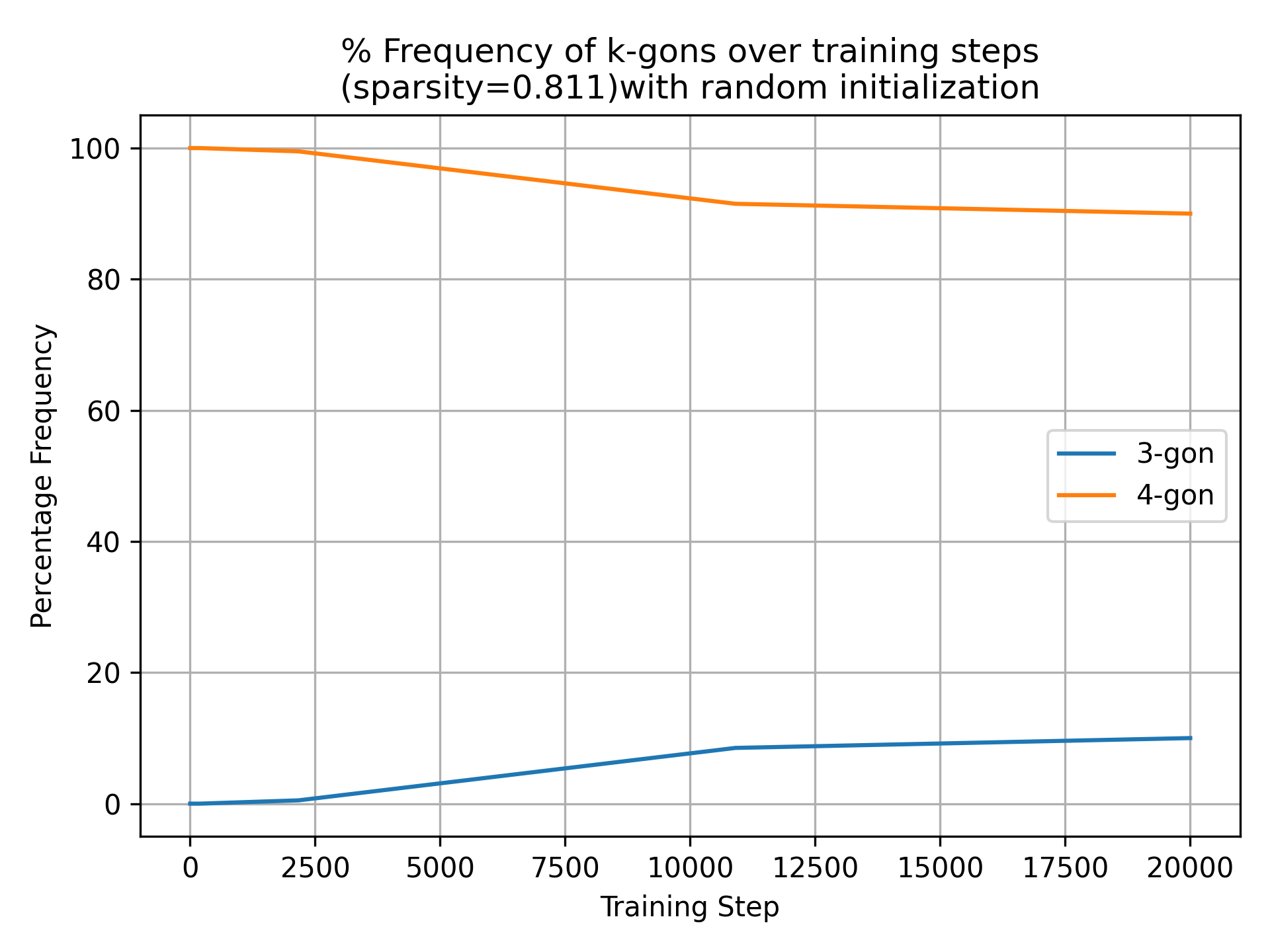
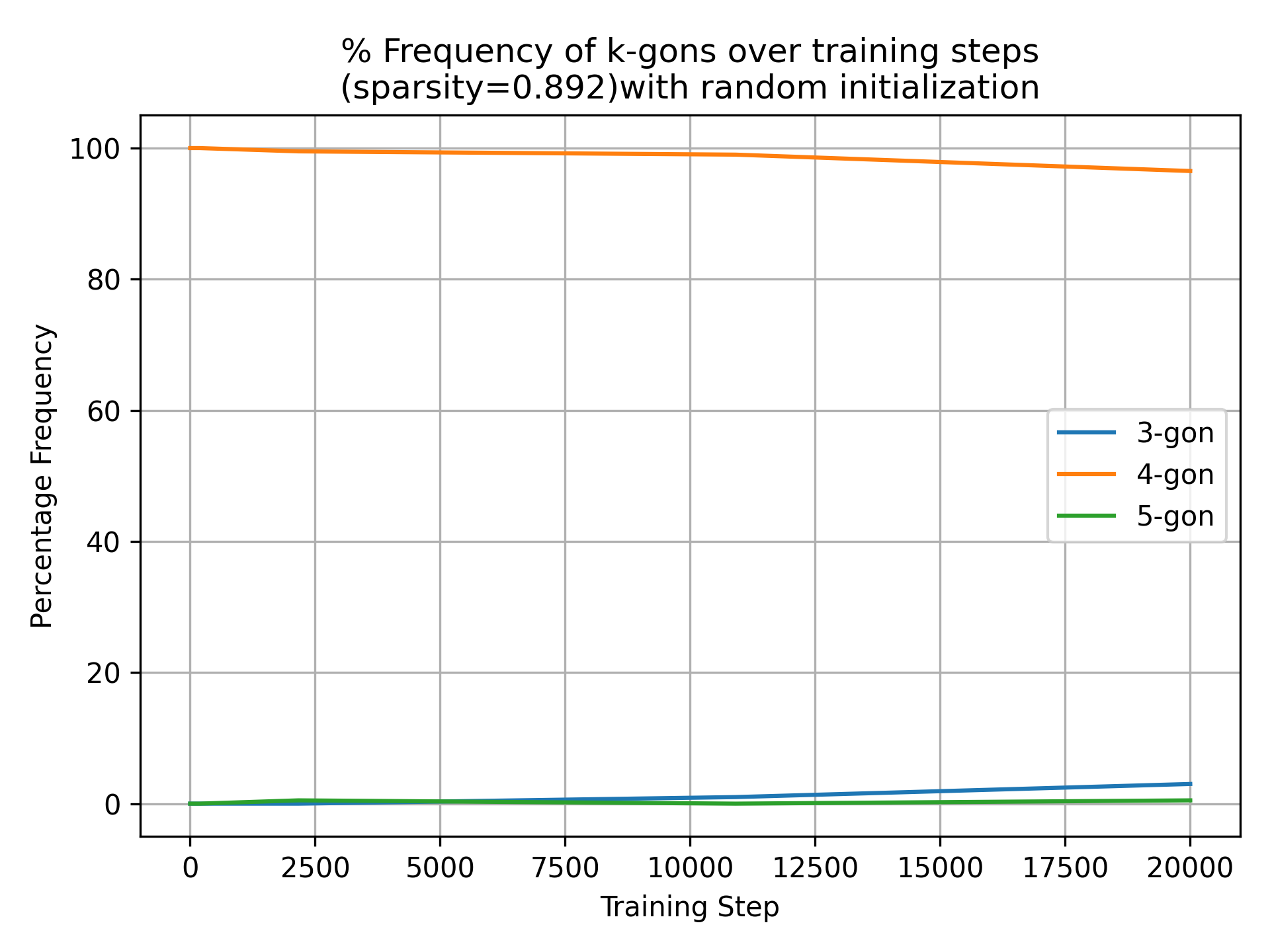
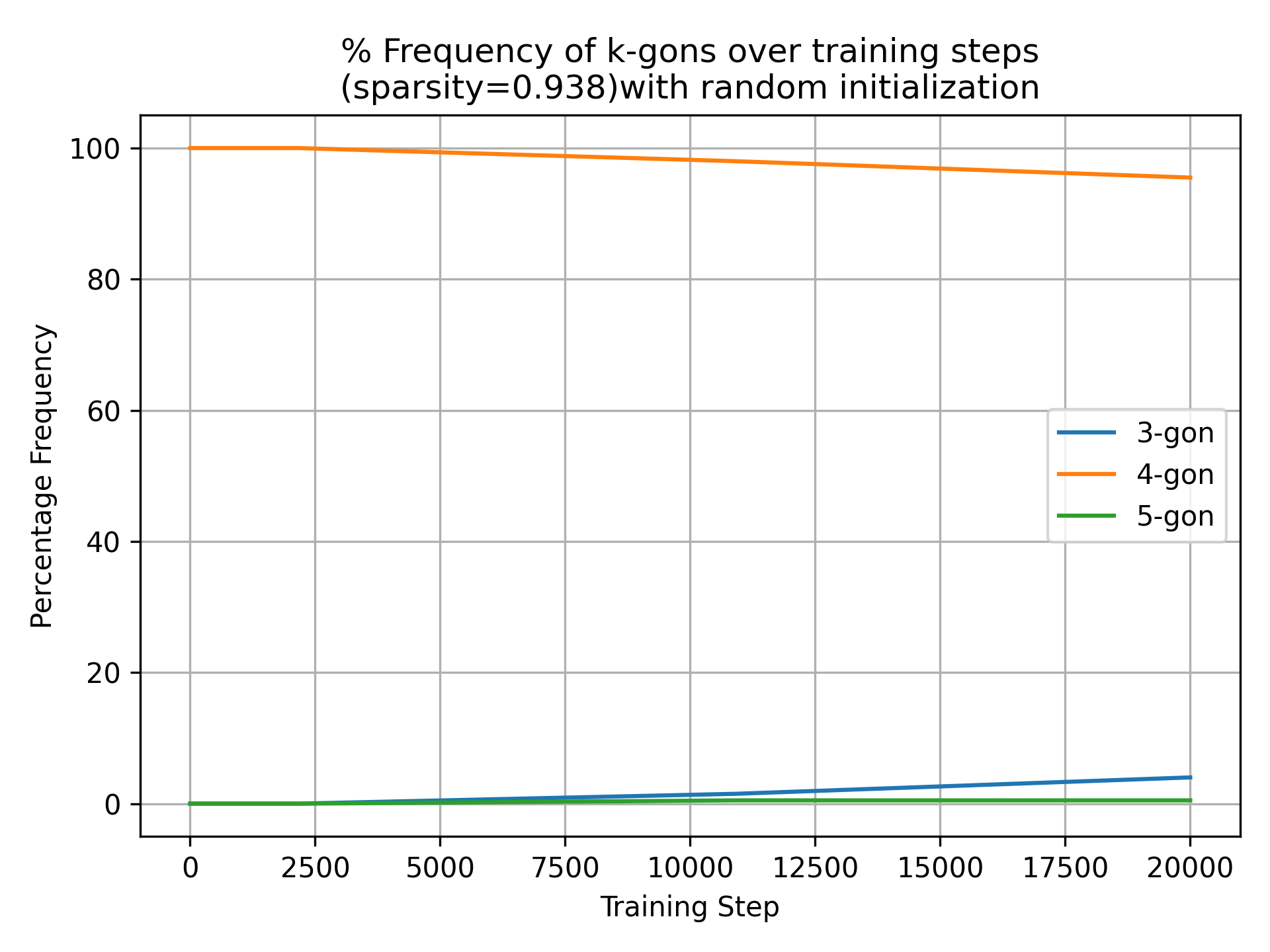
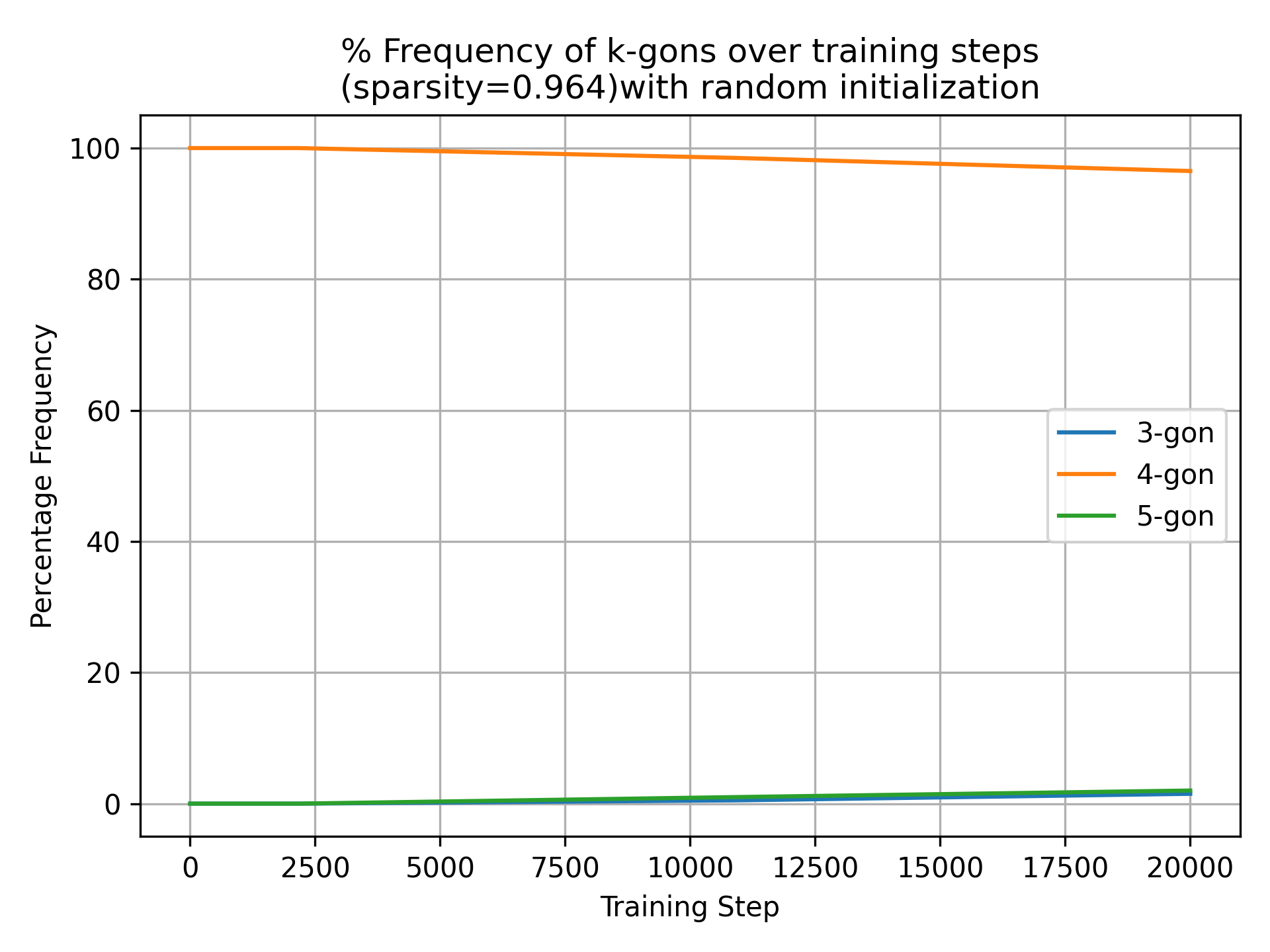
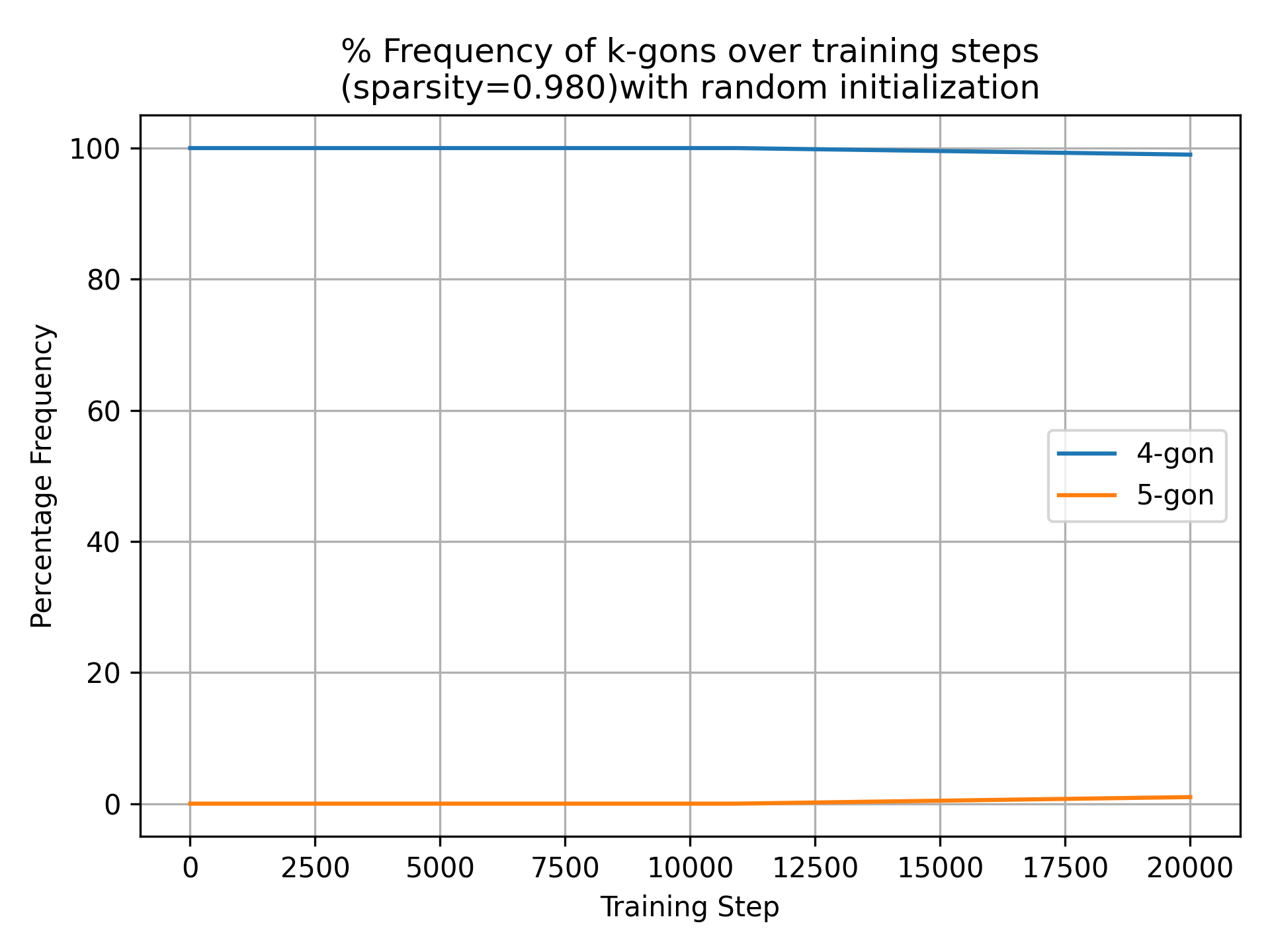
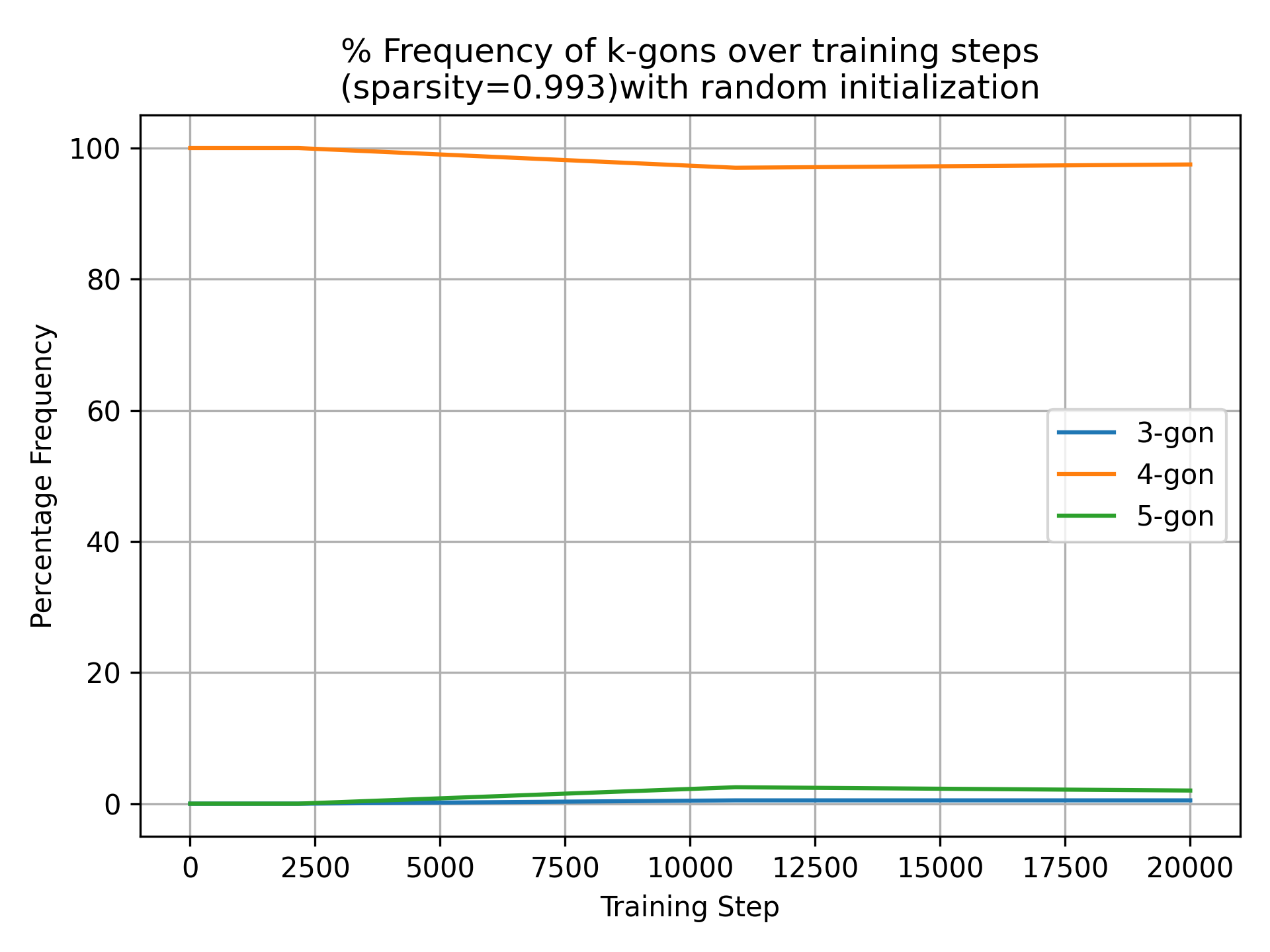
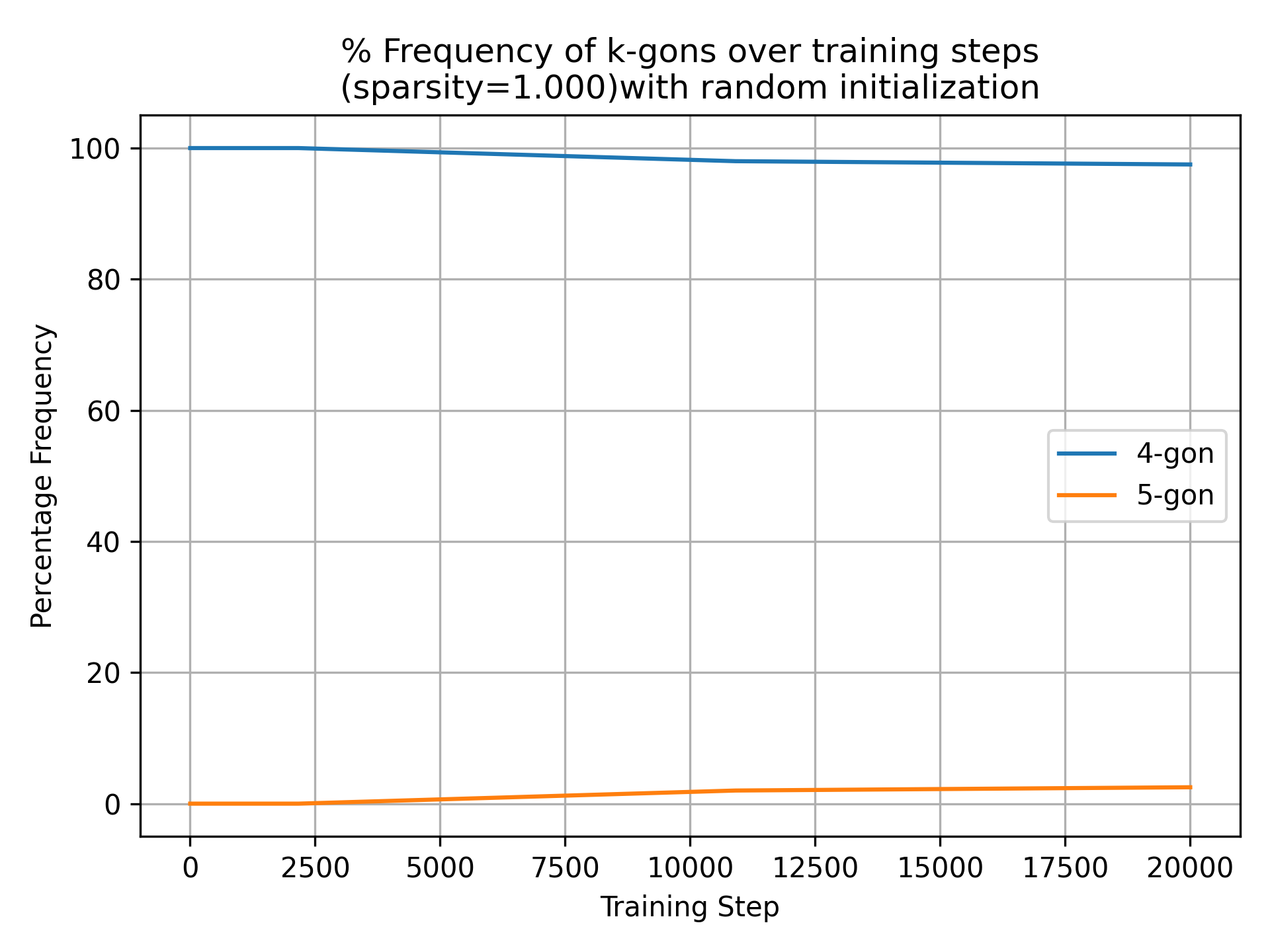
If you want to take a look at our models in more detail, we have uploaded the weights for all the training runs in our repository. The code to generate the plots of this post can be found under /notebooks/final_visualizations.py
Appendix
Version 1.14 is the optimally initialized series of experiments (see parameter use_optimal_solution) is set as True.
Version 1.15 is the randomly initialized 4-gon series of experiments (see parameter use_optimal_solution) is set as True.
config = {
"1.14.0":
{
"m": [6],
"n": [2],
"num_samples": [1024],
"num_samples_test": [192],
"batch_size": [1024],
"num_epochs": [20000],
"sparsity": [x for x in generate_sparsity_values(5, 10) if x != 0] + [1],
"lr": [0.005],
"momentum": [0.9],
"weight_decay": [0.0],
"init_kgon": [6], # Irrelevant when using optimal solution
"no_bias": [False],
"init_zerobias": [False],
"prior_std": [10.0], # Irrelevant when using optimal solution
"seed": [i for i in range(200)],
"use_optimal_solution": [True],
"data_generating_class": [SyntheticBinarySparseValued],
},
"1.15.0":
{
"m": [6],
"n": [2],
"num_samples": [1024],
"num_samples_test": [192],
"batch_size": [1024],
"num_epochs": [20000],
"sparsity": [x for x in generate_sparsity_values(5, 10) if x != 0] + [1],
"lr": [0.005],
"momentum": [0.9],
"weight_decay": [0.0],
"init_kgon": [4],
"no_bias": [False],
"init_zerobias": [False],
"prior_std": [1.0],
"seed": [i for i in range(200)],
"use_optimal_solution": [False],
"data_generating_class": [SyntheticBinarySparseValued],
},
}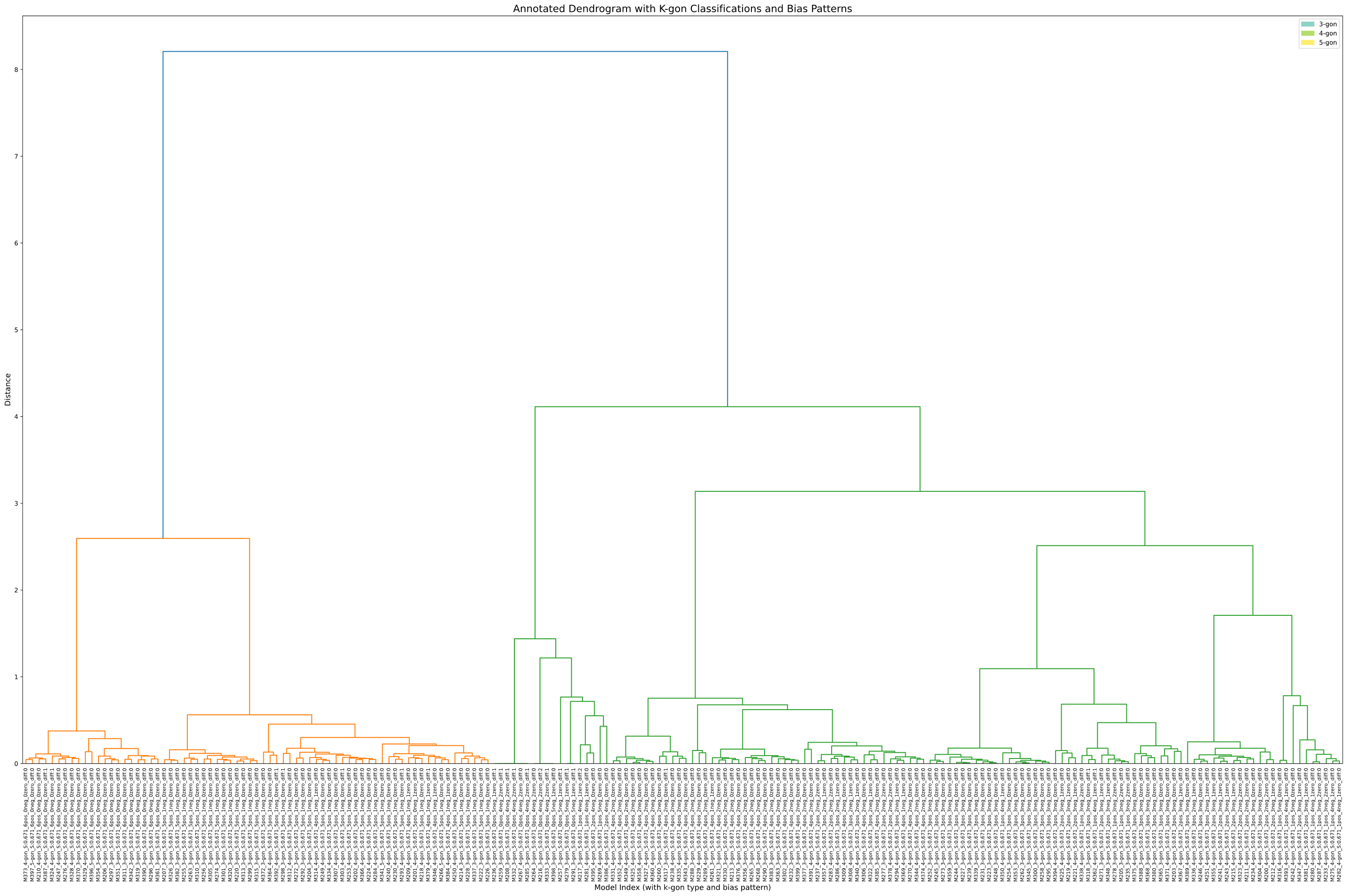
- ^
We initially ran these experiments with each entry in the input vector being 0 with probability S and 1 with probability 1-S, but then forgot that we had implemented it that way again and got confused by our own results. We then decided it made more sense for now to have at least one entry in the vector be non-zero.
- ^
It turned out the global minimum solution for 6 input dimensions and two hidden dimensions (a 6-gon with corners and bias ) was different from the lowest loss solution analyzed in Dynamical versus Bayesian Phase Transitions in a Toy Model of Superposition, because according to Zhongtian Chen: "We didn’t classify it because it’s at the boundary (-l^2/2 =b), so the potential is not analytic there."